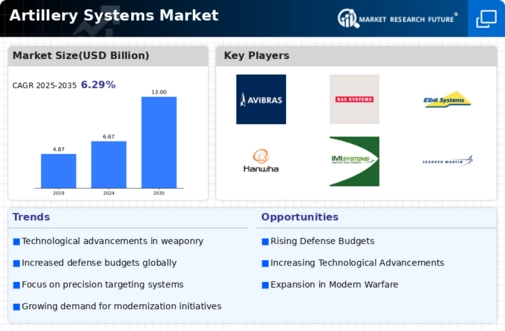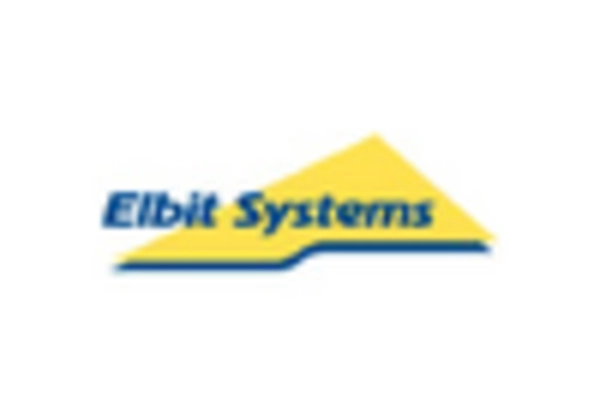Market Analysis
In-depth Analysis of Artillery Systems Market Industry Landscape
The artillery systems market is influenced by multifaceted dynamics that dictate its evolution, procurement, and utilization within defense industries worldwide. Technological advancements stand at the forefront of these dynamics. Continuous innovation in artillery systems, spanning improvements in accuracy, range, mobility, and integration with cutting-edge technologies, shapes the market's trajectory. The ongoing pursuit of more sophisticated and effective artillery systems to meet the demands of modern warfare scenarios drives research, development, and acquisition endeavors.
Geopolitical tensions and defense strategies significantly impact the dynamics of the artillery systems market. Changing security landscapes, geopolitical rivalries, and evolving defense strategies prompt nations to invest in advanced artillery capabilities. The need to maintain military superiority, address regional threats, and adapt to shifting security challenges fuels the demand for sophisticated artillery systems with increased precision, versatility, and strategic flexibility.
Moreover, the shift in military doctrines towards precision strikes and joint operations influences the artillery systems market dynamics. Modern warfare doctrines emphasize the importance of precise, rapid, and coordinated firepower. The integration of artillery capabilities into network-centric warfare structures and joint operations necessitates artillery systems capable of seamless interoperability and synchronization with other military assets for optimized combat effectiveness.
Defense budgets and government spending allocations significantly impact the artillery systems market dynamics. The availability of funding and investments in defense modernization programs dictates the pace and scale of artillery systems' acquisition, upgrades, and technological advancements. The evolving defense budget priorities shape the market by directing resources toward the development and procurement of specific artillery capabilities.
Furthermore, the evolving threat landscape and emerging challenges drive the development and deployment of specialized artillery systems. The need for counter-battery capabilities, anti-access/area denial (A2/AD) systems, and defenses against unmanned aerial systems (UAS) and missile threats fuels the demand for sophisticated and adaptive artillery technologies capable of countering these threats effectively.
Technological convergence and integration with advanced sensors and communication systems play a crucial role in the dynamics of the artillery systems market. Artillery platforms equipped with advanced sensors for precise targeting, improved communication systems for enhanced coordination, and integration with emerging technologies contribute to the market dynamics. This integration enhances the efficiency, accuracy, and operational capabilities of artillery systems.
Logistical considerations and maintenance efficiency also shape the market dynamics of artillery systems. Artillery platforms designed for ease of maintenance, reduced logistical footprint, increased mobility, and enhanced operational readiness are sought after. Systems that offer enhanced deployability and sustainability in diverse operational environments hold significance in procurement decisions.
Moreover, international collaborations and defense partnerships impact the artillery systems market dynamics. Collaborative efforts between nations for joint development, production, or procurement of artillery systems influence technology sharing, interoperability, and defense strategies, thereby shaping the global artillery market landscape.

















Leave a Comment